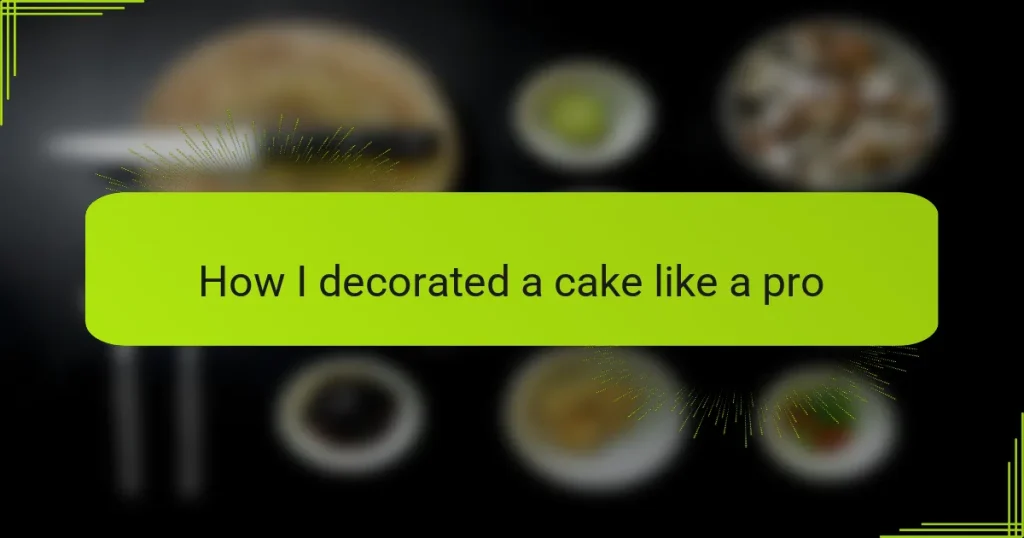Key takeaways
- Mastering cake decorating requires the right tools, including a turntable, spatula, and piping tips for better results.
- Choosing high-quality ingredients, like fresh butter and pure vanilla, significantly enhances the flavors and textures of cakes.
- Breaking down the decorating process into manageable steps, such as applying a crumb coat and practicing piping techniques, leads to professional-looking results.
- Patience and consistent practice are essential for achieving clean finishes and enhancing creativity in cake decorating.
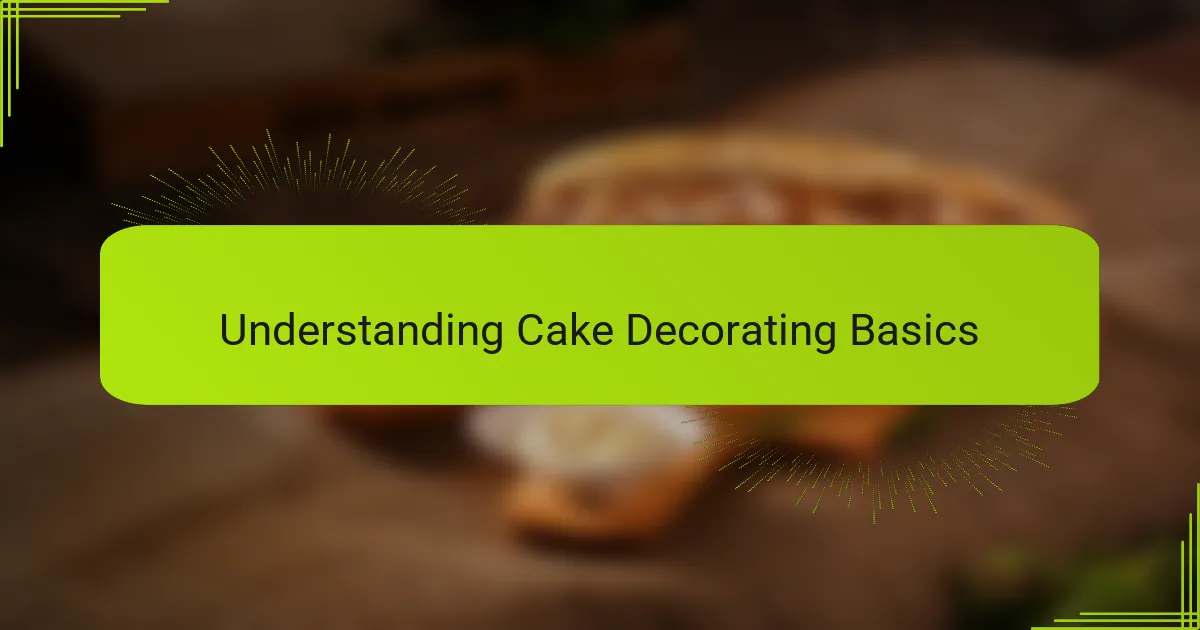
Understanding Cake Decorating Basics
When I first dipped my spatula into frosting, I quickly learned that mastering cake decorating starts with the right tools. Having a smooth icing spatula and piping bags made all the difference in achieving clean lines and professional finishes. It’s surprising how these simple tools can transform a cake from ordinary to impressive.
I also realized that understanding textures is key. Buttercream, fondant, and ganache each behave differently; knowing when and how to use them changed my approach completely. Have you ever struggled with frosting that just won’t spread evenly? That frustration taught me patience and the importance of practice.
Finally, I discovered that cake decorating is as much about creativity as technique. Breaking down complex designs into basic shapes and patterns helped me gain confidence. Isn’t it amazing how just a few simple skills can open up so many decorating possibilities?
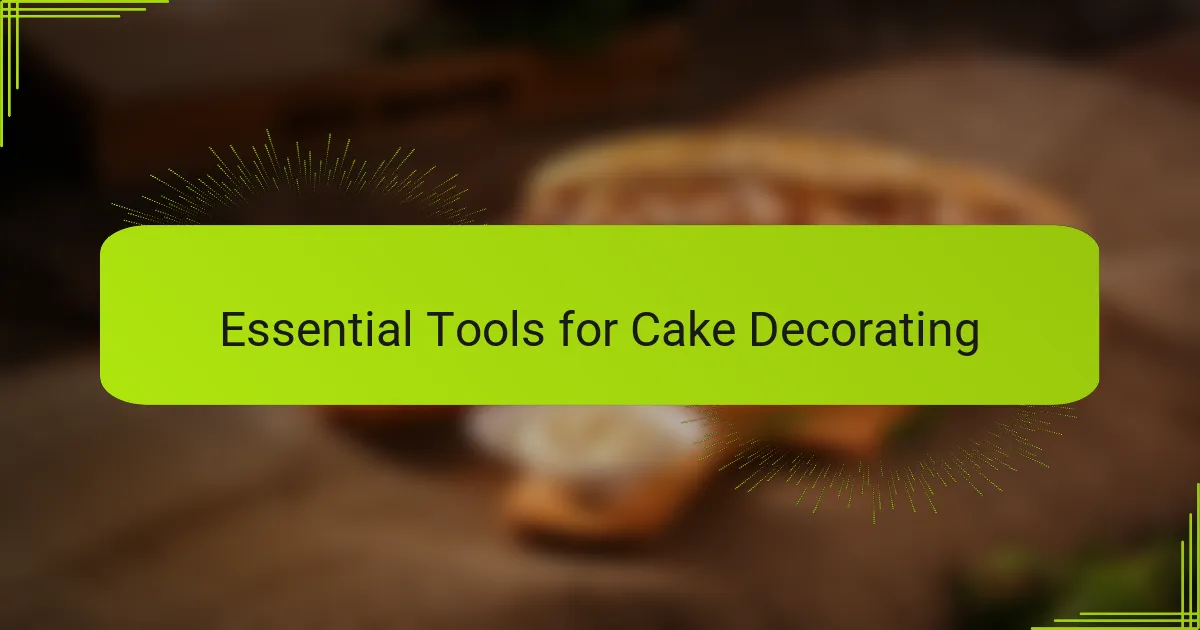
Essential Tools for Cake Decorating
One tool I never skip is a reliable turntable—it lets me spin the cake smoothly, so frosting goes on evenly without awkward hand movements. Have you tried decorating a cake stuck in one spot? It’s like painting a masterpiece without turning the canvas, and trust me, patience alone won’t save you there.
Another essential for me has been a set of piping tips. Each shape creates a different effect, from delicate rosettes to bold borders, and experimenting with them felt like learning a new language. Isn’t it thrilling when a simple squeeze of the bag turns into a beautiful decoration?
And let’s not forget the bench scraper. Early on, I underestimated it, but it’s crucial for smoothing edges and getting that polished, professional look. When I use it, I feel like a true cake artist rather than just an eager beginner fumbling with frosting.
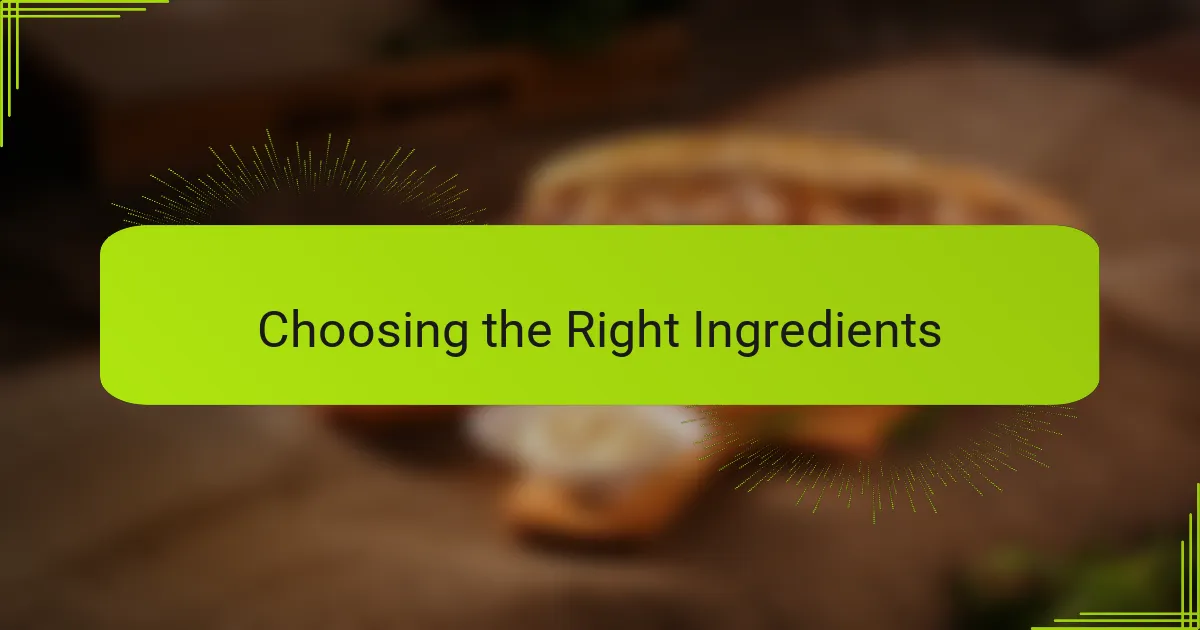
Choosing the Right Ingredients
Choosing the right ingredients was a game-changer for me. I remember once trying to frost a cake with low-quality butter and ended up with a greasy mess rather than the smooth, fluffy buttercream I was aiming for. It made me realize that not all butters or sugars are created equal—fresh, high-quality ingredients really do make the flavors and textures pop.
I also learned to pay attention to the flour type because it affects the cake’s crumb and stability under decoration. Ever tried decorating a cake that’s too crumbly or dense? It’s frustrating because no matter how skilled you are with frosting, the base has to be just right to hold your masterpiece together. Choosing the right flour gave me that perfect balance every time.
Another small but significant detail was selecting fresh eggs and pure vanilla extract. These may seem minor, but they elevate the taste and fragrance of the cake, making every bite as delightful as the look. Don’t you find that when the ingredients are top-notch, it’s easier to feel confident about every step—from baking to the final flourish?
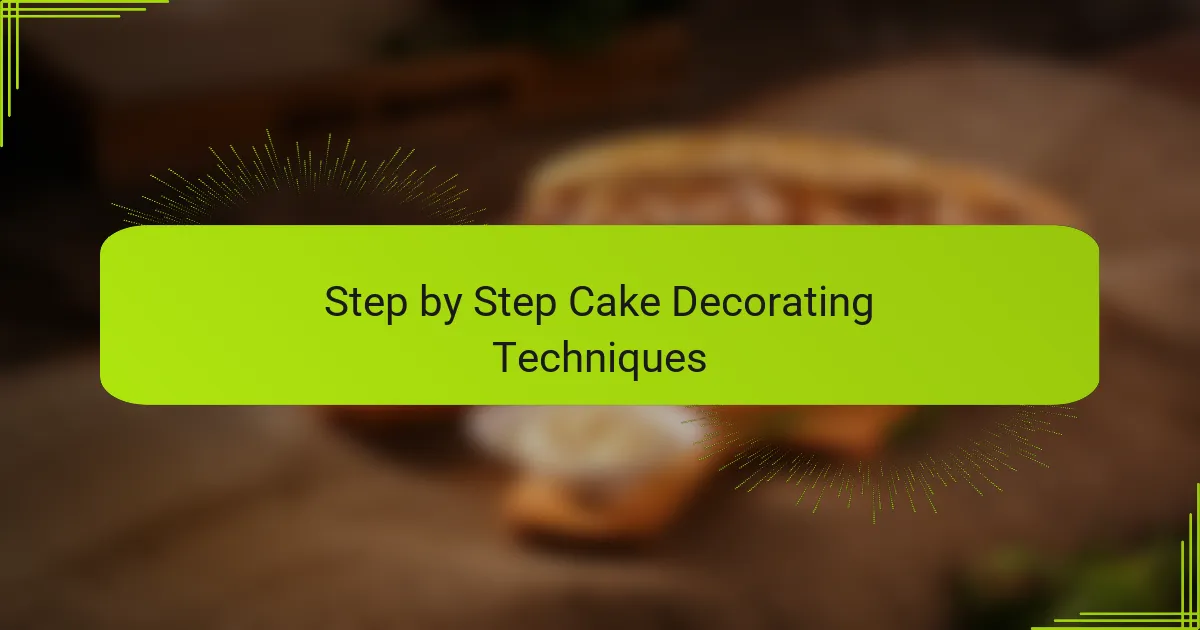
Step by Step Cake Decorating Techniques
When I started breaking down my cake decorating into clear steps, it made the whole process feel less overwhelming. I’d first apply a thin crumb coat to lock in those pesky crumbs before piling on the final smooth layer—this simple trick saved me from countless frosting disasters. Have you ever tried skipping that crumb coat? The mess it creates is a lesson I learned the hard way.
Next, I focused on getting the edges sharp and even, using a bench scraper while spinning the cake on my turntable. It takes patience, but that slow, steady motion transformed my cakes from amateur-looking to something I was genuinely proud of. Do you know that satisfying feeling when your cake looks flawless from every angle? It’s addictive.
Finally, I moved on to piping borders and decorative details. I remember the first time I made perfect rosettes—it felt like unlocking a secret skill. Piping might seem tricky at first, but breaking it down step by step made me realize anyone can do it with a little practice. Isn’t it rewarding when the cake starts to look like a professional’s work?

Common Mistakes to Avoid
One mistake I made early on was rushing through frosting application without chilling the cake first. I learned the hard way that frosting melts and slides off if the cake isn’t cool enough—have you ever had your hard work slide right off the plate? Patience here is key to keeping your cake looking neat and inviting.
Another trap I fell into was using inconsistent pressure when piping decorations. At first, my rosettes came out uneven and lopsided, which was frustrating. Have you noticed how a steady hand makes all the difference? Taking my time and practicing consistently helped me gain control and confidence with the piping bag.
Also, I used to skip cleaning my tools between colors or layers, thinking it saved time. Instead, it smudged colors and created messy edges that spoiled the look. Isn’t it surprising how such a small habit can impact the final presentation? Now, wiping tools clean at every step feels like part of the decorating ritual that keeps my cakes looking professional.
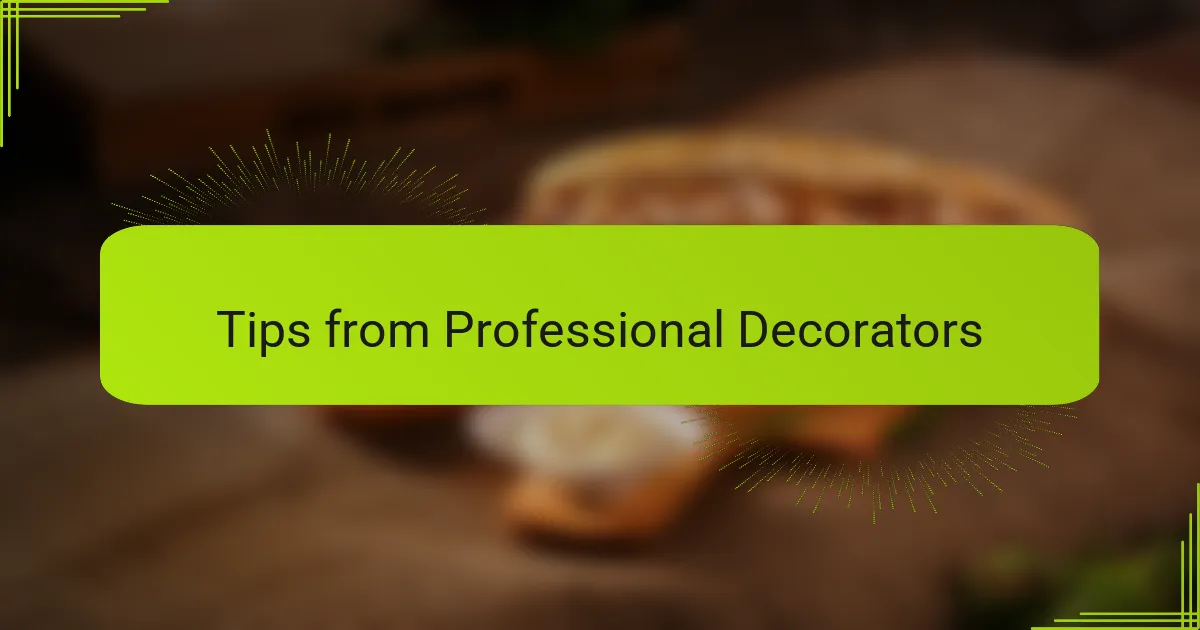
Tips from Professional Decorators
Professional decorators always stress the importance of patience—they say rushing is the biggest enemy of a flawless finish. I remember trying to speed through frosting once, only to end up with uneven patches and smudges. Waiting for each layer to set properly made all the difference, turning a cake that looked rushed into one that felt carefully crafted.
Another tip I found invaluable is practicing consistent piping pressure. Early on, my decorations looked shaky and uneven because my squeeze was all over the place. Have you ever noticed how a gentle, steady hand can transform simple swirls into elegant patterns? It’s like learning a rhythm that, once mastered, feels almost meditative.
Lastly, professional decorators swear by cleaning tools between steps—a habit I initially underestimated. When I skipped wiping my spatula or piping tips, colors blurred and details got messy. Now, I treat cleaning as part of the creative flow, and that small extra effort really boosts the crispness and polish of the final cake. Doesn’t it feel rewarding when even tiny details show your care and skill?
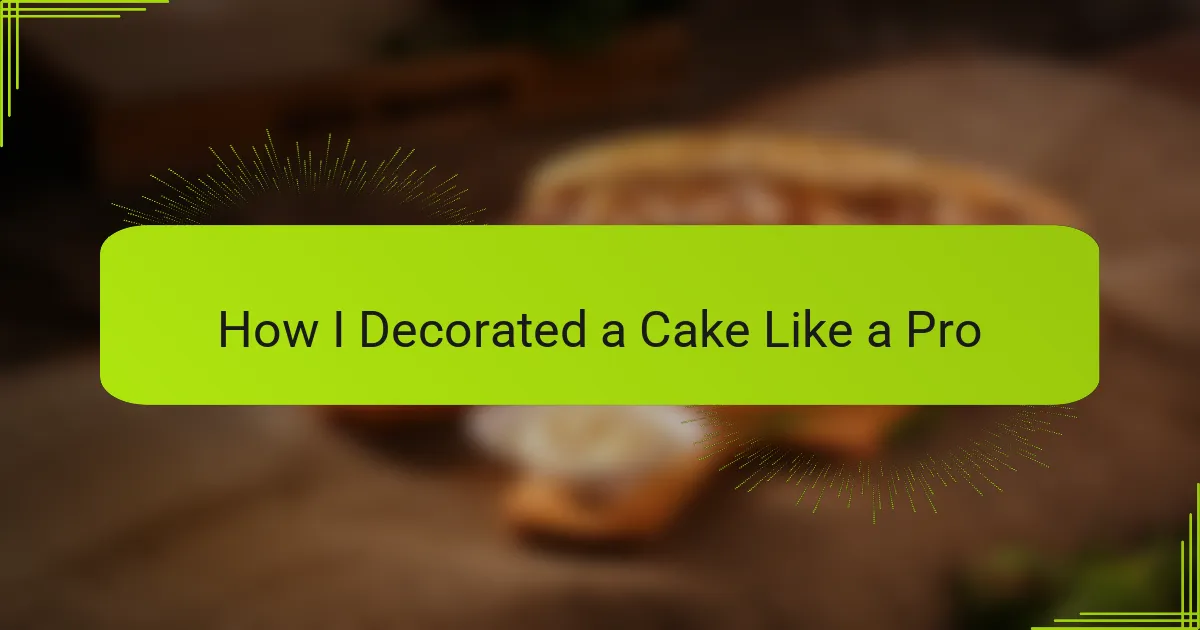
How I Decorated a Cake Like a Pro
Decorating my cake like a pro wasn’t an overnight miracle—it was about building confidence with each stroke of frosting. I remember the first time I managed a smooth, even layer without tearing the cake’s surface; that simple win gave me a sense of accomplishment that fueled my passion. Have you ever felt that rush when your hands finally follow your vision? It’s addictive.
I also learned to trust the process, especially when adding intricate details with piping bags. My hands trembled at first, and mistakes were plenty, but breaking the design into manageable parts helped me focus and reduce stress. Does it surprise you how dividing a complex task into smaller steps can build mastery? It certainly did for me.
Finally, stepping back and viewing the cake from all angles changed everything. I started noticing little imperfections and found joy in fixing them, turning each cake into a personal masterpiece. Have you tried looking at your creation like an artist, not just a baker? That shift in perspective made me decorate like a pro.
